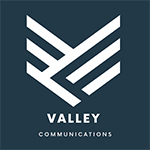In today’s digital landscape, Meta platforms (Facebook and Instagram) are more than just social networks; they’re powerful engines for business growth, especially when it comes to Meta Advertising for Small Businesses. For many businesses, a well-crafted ad on Facebook or Instagram is the first touchpoint with a potential client. But the journey from a click on an ad to a genuine, authentic business relationship requires more than just a good creative. It demands a strategic approach to engagement, qualification, and follow-through.
This blog post will guide you through the best practices for turning Meta leads into loyal clients, covering everything from initial response to scheduling that crucial first meeting.
1. Responding Promptly: The First Impression is Everything
Imagine clicking an ad, interested in a service, and then hearing nothing for days. Frustrating, right? In the fast-paced world of social media, speed is paramount.
- Be Instant: Aim to respond to new leads (whether from a lead form, a direct message, or a comment) within minutes, not hours. Meta’s algorithms often favor pages with high responsiveness, and more importantly, your potential client is likely still in “research mode” and could easily move on to a competitor.
- Automate, Then Personalize: Use Meta’s automated response features (like instant replies in Messenger) to acknowledge receipt immediately. Follow up quickly with a personalized message that references their specific inquiry.
- Set Up Notifications: Ensure your business page notifications are active on your phone and desktop so you’re alerted to new messages instantly.
2. Qualifying Questions: Understanding Their Needs Beyond the Surface
Once you’ve made that swift initial contact, your next step is to qualify the lead. This isn’t about being pushy; it’s about understanding if your services are a good fit for their needs and if they’re genuinely ready to move forward.
- Open-Ended Questions: Avoid yes/no questions. Instead, ask questions that encourage them to elaborate.
- Instead of: “Are you looking for a new website?”
- Try: “What challenges are you currently facing with your online presence, and what are you hoping a new website would help you achieve?”
- Budget & Timeline (Subtly): While you don’t want to lead with these, gently probe if they have a general idea of their budget or a timeline for when they’d like to implement a solution. This helps you gauge their seriousness and readiness.
- Identify Pain Points: What problem are they trying to solve? The more you understand their pain, the better you can position your solution.
3. Listening to Client Needs: Beyond the Answers
Qualifying questions give you data, but true lead nurturing comes from active listening. This means paying attention not just to what they say, but how they say it, and what underlying needs or concerns they might have.
- Read Between the Lines: Sometimes, a client might express a superficial need, but deeper listening reveals a more significant challenge. For example, they might say “I need more followers,” but the underlying need is “I need more sales, and I think followers will get me there.”
- Empathize: Show that you understand their situation. Use phrases like, “I hear that you’re struggling with X, and many of our clients have faced similar issues before seeing Y results.”
- Don’t Rush to Solutions: Before pitching your service, ensure you’ve fully grasped their situation. A premature pitch can make you seem sales-focused rather than client-focused.
4. Setting Expectations for Services: Transparency Builds Trust
Once you have a good understanding of their needs, it’s time to clearly articulate how your services can help. Transparency here is crucial for building trust and avoiding future misunderstandings.
- Be Clear About What You Offer: Explain your services in plain language, avoiding jargon. What problems do you solve? What outcomes can they expect?
- Outline the Process: Walk them through the typical steps of working with you. This could include initial consultation, proposal, onboarding, project phases, and ongoing support.
- Discuss Pricing Frameworks: While you might not give an exact quote at this stage, be transparent about your pricing model (e.g., hourly, project-based, retainer) and any potential factors that influence cost.
- Manage Expectations: Be realistic about timelines and results. Under-promise and over-deliver, rather than the other way around. If a service takes 4 weeks, say 4 weeks, not 2.
5. Scheduling: The Next Step in the Journey
The ultimate goal of this initial Meta interaction is often to move the conversation offline or to a more dedicated consultation.
- Offer Clear Next Steps: Don’t leave them guessing. “The next step is a brief 15-minute discovery call where we can dive deeper into your specific situation.”
- Provide Options: Use a scheduling link (e.g., Calendly, Acuity Scheduling) that allows them to pick a time that works for them. Offer a few specific time slots if you prefer.
- Reinforce Value: Briefly reiterate the benefit of the scheduled meeting. “This call will help us determine the best strategy to achieve [their desired outcome].”
- Send a Confirmation: Once scheduled, send an automated confirmation with all the details (date, time, meeting link, what to expect).
From Ad to Authentic Relationship: The Continuous Cycle
Transforming a Meta ad click into a genuine business relationship is a process that requires consistent effort, empathy, and strategic communication. By focusing on prompt, personalized responses, asking insightful qualifying questions, actively listening to their needs, setting clear expectations, and facilitating easy scheduling, you’ll not only generate more qualified leads but also begin to build the foundation for lasting, authentic client relationships. Your Meta business page isn’t just a billboard; it’s the start of your next great partnership.

